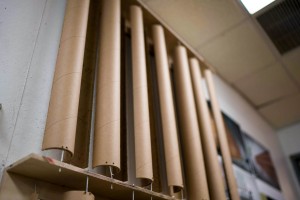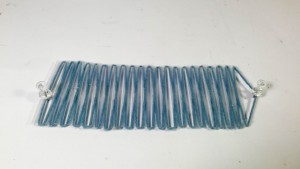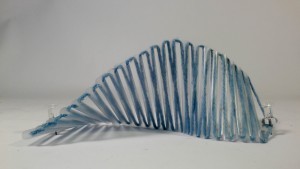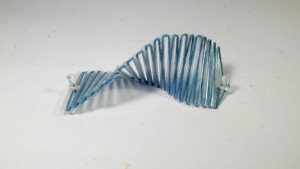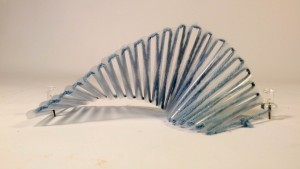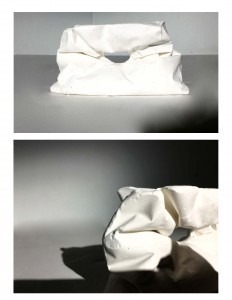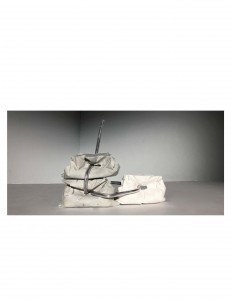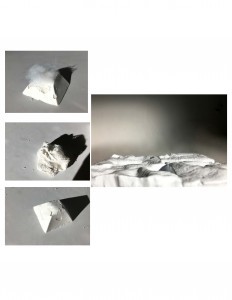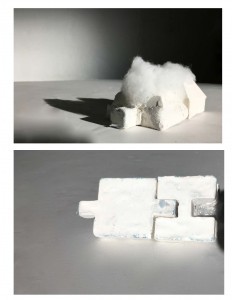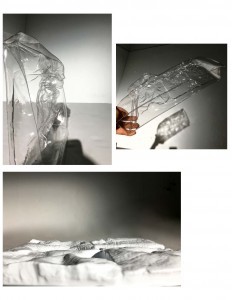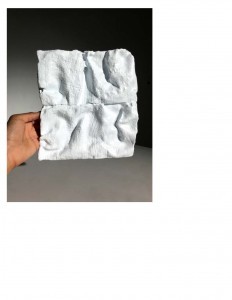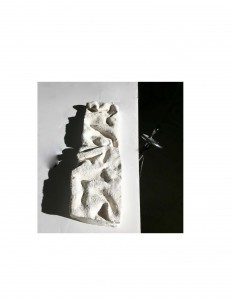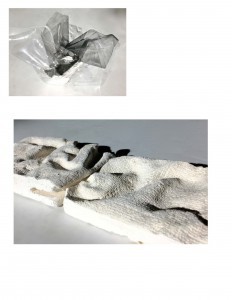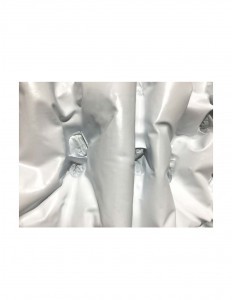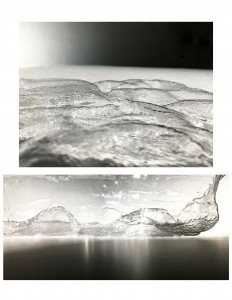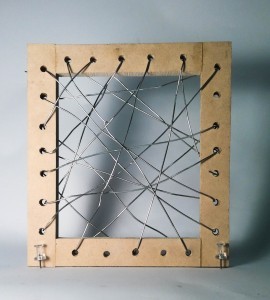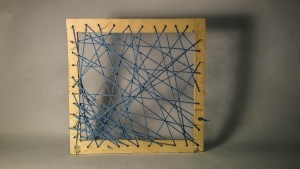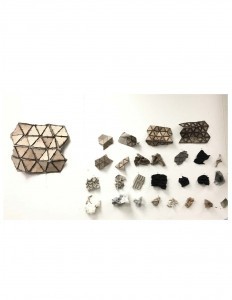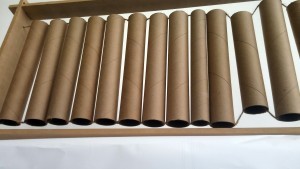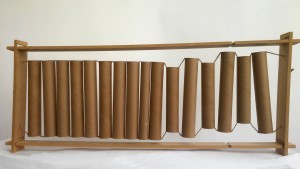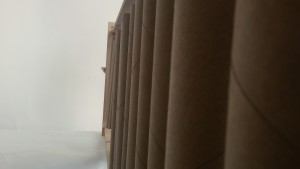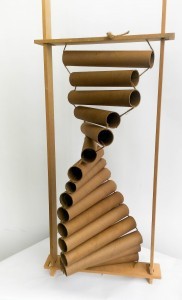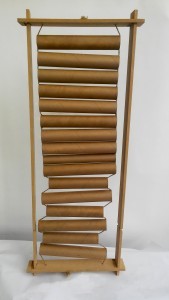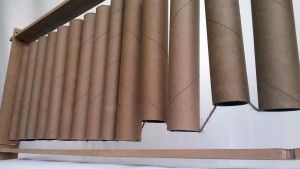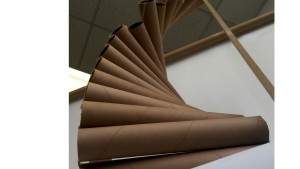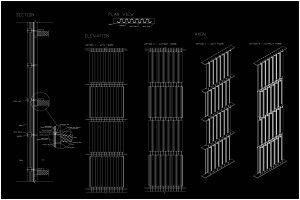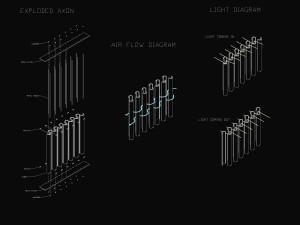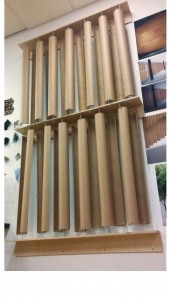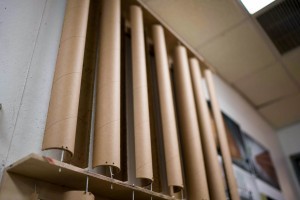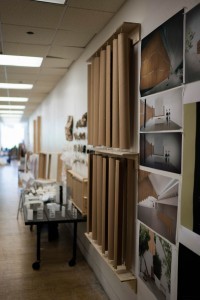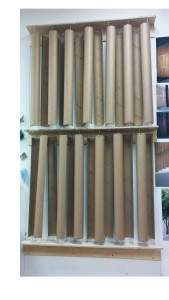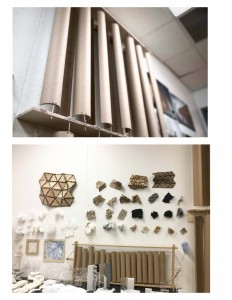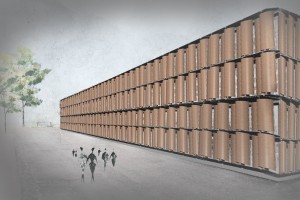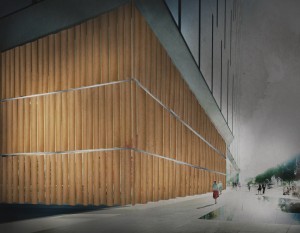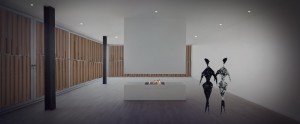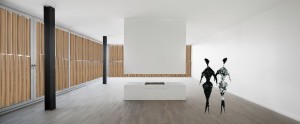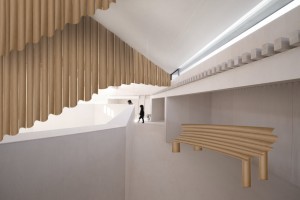After addressing the fundamental issues of material assemblies, detailing theory and practice. Students were assigned to groups and asked to develop a component-based system of construction that will be utilized in the building of a full-scale material construct.Paired up with the previous research of plastic, there was the added element of textile. The new objective was supposed to become a system that can be incorporated into a structure, having in mind the material properties previously explored.
Bellow are some new material explorations using plastic and textile. In addition to these materials, we used other material imitating the aesthetics or qualities of the chosen materials. We used cast plaster or plastic imitating the drapery of textile, or metal wire weaved the same way thread would have been used.
Here is a step further of the material investigation, inspired by a previous piece of thread weaved through plastic straws.
Here is the final presentation with the full-scale mock-up:
Steps leading to final project: Building on the knowledge gained from the first part of the course on the properties of materials, we had to develop a material catalog in a rigorous, iterative process allowing us to gain tacit knowledge of the
Building on the knowledge gained from the first part of the course on the properties of materials, we had to develop a material catalog in a rigorous, iterative process allowing us to gain tacit knowledge of the properties, characteristics, limitations and possibilities of the given material. I was chosen to study the properties of plastic and rubber.
Another type of plastic that I researched was the Plexiglas. I was intrigued by the possibilities of manipulating the transparency, light, and shadows. Through taking the Plexiglas and cutting, drilling holes, and sand blasting the pieces, I achieved various different results. Like glass, if a transparent piece is cut, its creates a shadow. The opposite is true of an opaque piece of Plexiglas.
